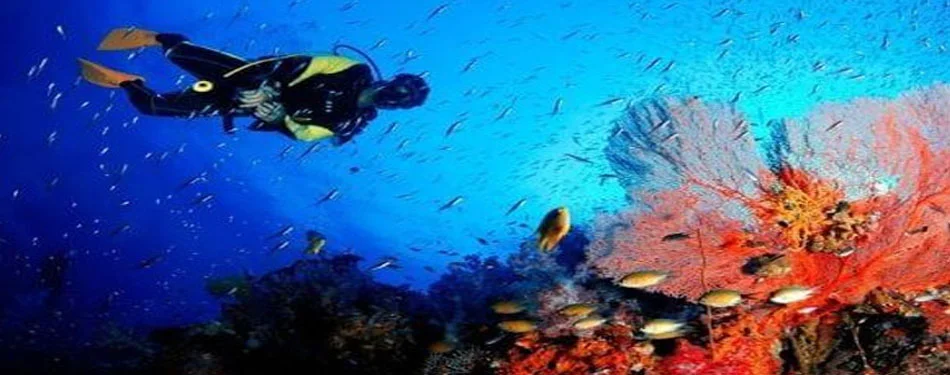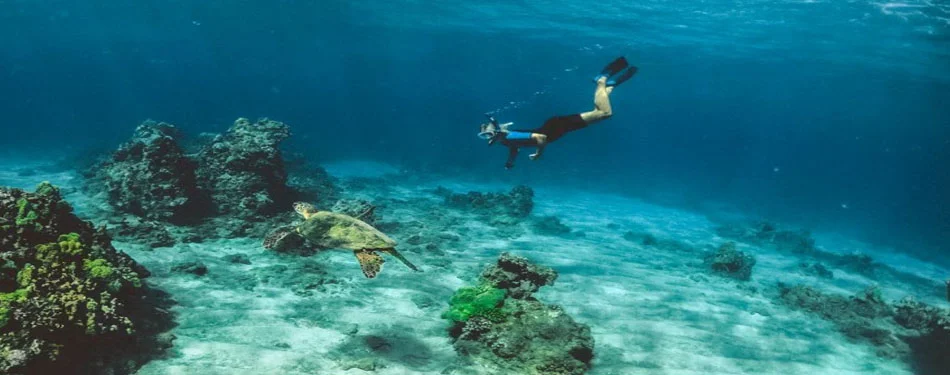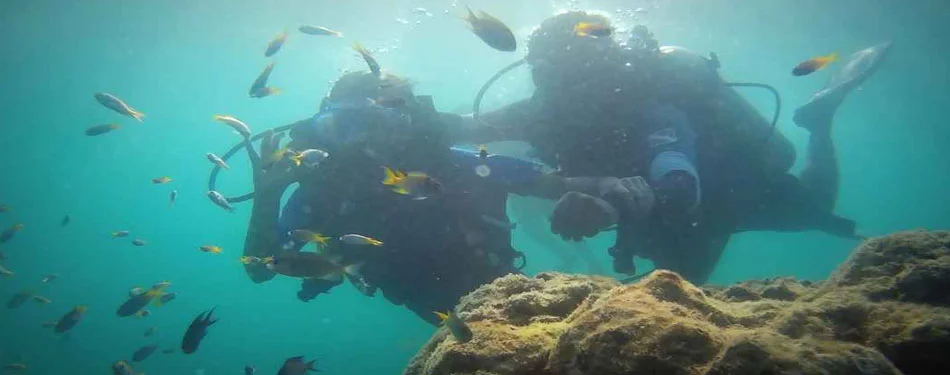Andaman Islands: Tales from Below the Waves - Shipwrecks and Underwater History

The Andaman Islands, a breathtaking archipelago in the Bay of Bengal, is not only a
paradise for beach lovers and nature enthusiasts but also a haven for divers keen on
exploring the underwater world. The islands are especially well-known for their
fascinating shipwrecks, which draw both adventurers and historians who are curious to
learn what lies beneath the surface. This investigation into the underwater history and
shipwrecks of the Andaman Islands opens a fascinating new chapter of treasures and
maritime legends.
Andaman's Underwater History
The Andaman Islands' underwater history is rich and varied, featuring a variety of
shipwrecks that serve as windows into the past. These submerged vessels, resting on the
ocean floor, tell stories of naval battles, hidden treasures, and tragic voyages. Each
shipwreck in the Andaman Sea offers a unique narrative, preserved over centuries under
layers of coral and marine life.
Shipwreck Diving Adventures in Andaman
One of the most thrilling activities in the Andaman Islands is shipwreck diving. Divers
from around the world come to experience the unique adventure of exploring sunken ships
that have become artificial reefs teeming with aquatic life. These diving adventures
allow enthusiasts to get up close with history, experiencing firsthand the shipwrecks
that have shaped Andaman's underwater legacy.
Havelock Island, now officially known as Swaraj Island, is a popular spot for these
diving expeditions. The underwater world of shipwrecks in Havelock Island is
particularly renowned for its visibility and the variety of marine life that divers can
witness among the historic ruins.
The SS Inchkett: A Dive into the Past

Among the many shipwrecks, the SS Inchkett stands out. It was a British ship that sank
in the early 20th century and now lies at the bottom of the sea near Havelock Island.
Diving at this site is like traveling back in time. The ship's structure is now covered
with vibrant coral formations and is home to a diverse range of marine species.
Exploring this shipwreck is not just about the thrill of diving but also about
connecting with the maritime history of the Andaman Islands.
For more information, visit here
Andaman's Sunken Treasures

The idea of sunken treasures often brings up images of gold coins and jewels resting on
the seabed, guarded by the skeletons of ancient ships. In the Andaman Islands, while
treasure in the traditional sense may not be everywhere, the real treasure lies in the
biodiversity and the clean condition of the underwater sites. These "treasures" are
important for understanding the marine ecosystem and the historical significance of the
region.
Environmental conservation efforts are ongoing to preserve these underwater treasures.
These initiatives ensure that the shipwrecks remain intact as historical artifacts and
continue to support marine life, contributing to the biodiversity of the Andaman Seas.
Conservation and the Future of Andaman's Shipwrecks
The future of exploring Andaman's underwater history and its shipwrecks depends
significantly on conservation efforts. Preserving these historical sites is vital for
educational and ecological reasons. It allows future generations to learn about and from
the past, and it maintains the ecological balance of the region’s marine environment.
Organizations and local government bodies are implementing stricter guidelines for diving
and underwater exploration to minimize human impact on these fragile underwater sites.
These regulations help ensure that the adventure of exploring Andaman’s shipwrecks can
continue sustainably and responsibly.
Engaging with Local Culture and History
Visiting the Andaman Islands offers more than just beach vacations and underwater
adventures; it is also an opportunity to engage with the local culture and history. The
islands have a rich heritage that includes British colonial history, as well as a darker
past related to the indigenous tribes and the penal colony established by the British in
Port Blair.
Understanding this broader history adds depth to the experience of exploring the
shipwrecks. It provides context about how and why these ships ended up at the bottom of
the sea and enriches the overall experience of visitors.
Protecting the Maritime Heritage
The protection of Andaman's maritime heritage is important, not only for preserving
historical and archaeological integrity but also for maintaining the natural marine
habitat that has evolved around these shipwrecks. Efforts to protect these sites are
various, involving local communities, government agencies, and international
conservation organizations. These groups work together to enforce policies that prevent
illegal salvaging activities and limit the environmental impact of tourism and diving.
Educational Programs and Awareness
Educational programs play a vital role in the preservation of Andaman's shipwrecks and
underwater history. By educating divers and tourists about the significance of these
sites and the importance of responsible diving practices, conservation efforts can be
strengthened. These programs often include information on the historical background of
the shipwrecks, the ecological importance of the marine life that inhabits these
structures, and guidelines for minimizing damage during dives.
Local schools and educational institutions also incorporate lessons on the Andaman's
maritime history and conservation efforts into their curricula, building a sense of
pride and stewardship among young residents. This education is important for long-term
preservation and helps ensure that future generations understand the value of their
cultural and natural heritage.
The Role of Advanced Technology in Exploration
Advancements in underwater technology have revolutionized the way we explore and study
shipwrecks in the Andaman Islands. Modern diving equipment, underwater robotics, and
imaging technology allow for deeper, safer, and more detailed exploration of shipwreck
sites. These technologies provide valuable data that helps historians, archaeologists,
and scientists study the construction of old ships, the causes of their sinking, and the
ecosystems that have developed around them.
Moreover, non-invasive techniques, such as 3D mapping and sonar imaging, enable
researchers to document shipwrecks without disturbing the site, ensuring that these
underwater time capsules remain intact for future studies and exploration.
Tourism and Its Impact
While shipwreck diving boosts local tourism and brings economic benefits to the Andaman
Islands, it also poses challenges to the preservation of these historical sites. The
increase in diving activities can potentially harm the underwater environment if not
managed properly. Tourism operators need to enforce sustainable practices, such as
limiting the number of dives per site, ensuring that divers are well-trained in buoyancy
control, and prohibiting the collection of artifacts.
Responsible tourism not only helps preserve the shipwrecks but also enhances the
experience for visitors, ensuring that these underwater treasures continue to awe and
inspire for generations to come.
Community Involvement in Conservation
Community involvement is key to the successful conservation of the Andaman's underwater
history. Local communities, including fishermen and tourism operators, play an active
role in protecting these sites. Many community members participate in regular clean-up
drives to remove debris and pollutants from the waters around the shipwrecks. Others
assist researchers and conservationists by providing local knowledge and historical
insights that might not be available from other sources.
These community-led initiatives not only help in the direct conservation of the
shipwrecks but also build a community ethos of preservation and respect for the natural
and historical environment.
A Deep Dive into Andaman’s Maritime Legacy
The Andaman Islands are a unique destination where history, adventure, and nature
converge beneath the waves. The shipwrecks scattered across the seabed are not just
attractions for thrill-seekers but are also monuments of maritime history, telling tales
of bravery, tragedy, and time. As we dive into the waters to explore these underwater
wonders, we not only uncover the past but also contribute to preserving these stories
for future explorations.
Whether you are a history buff, an adventure seeker, or a nature lover, the shipwrecks of
the Andaman Islands promise a deep and enriching experience, making every dive an
exploration of both the past and the present.


